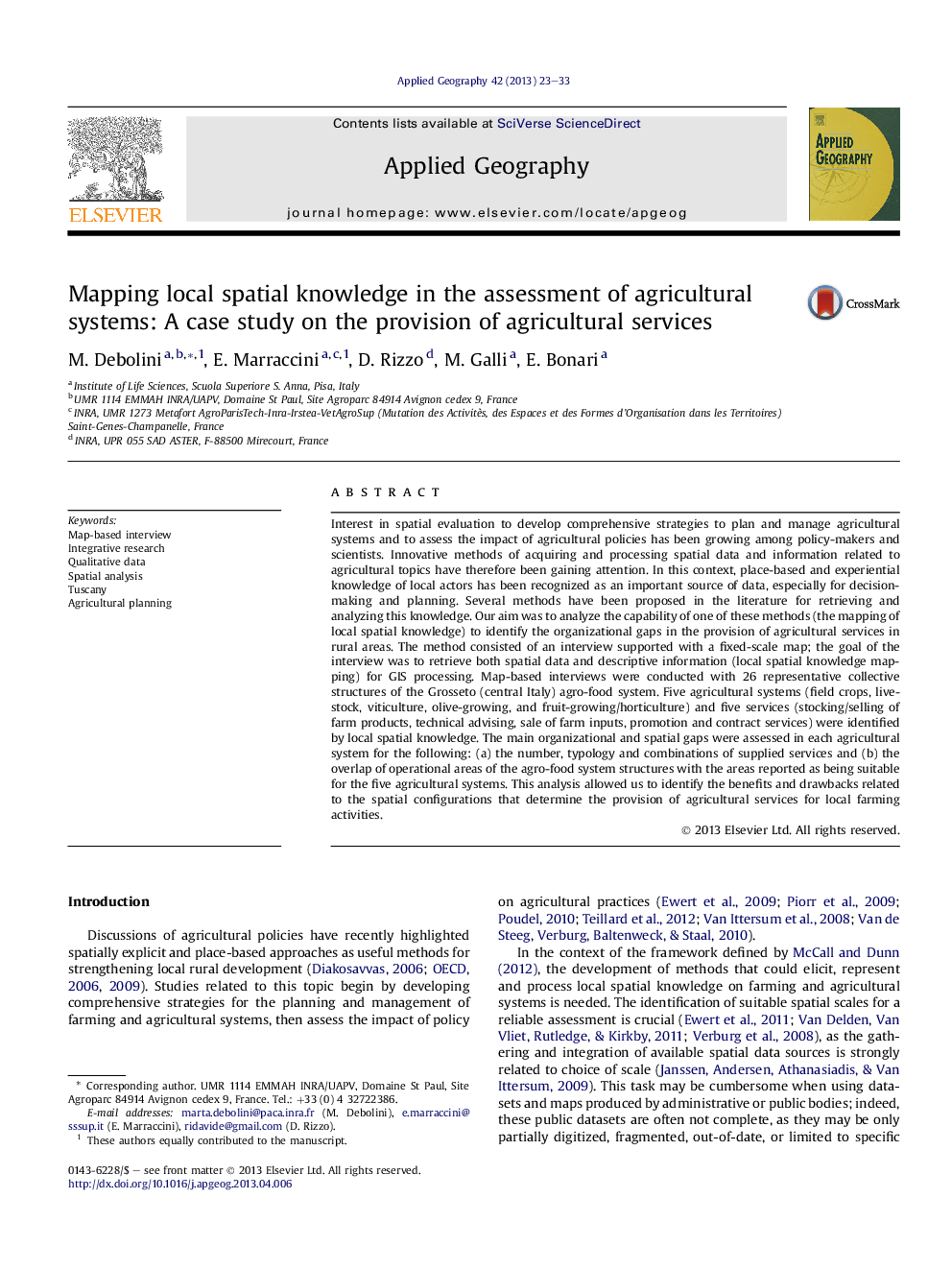| Article ID | Journal | Published Year | Pages | File Type |
|---|---|---|---|---|
| 6538882 | Applied Geography | 2013 | 11 Pages |
Abstract
Interest in spatial evaluation to develop comprehensive strategies to plan and manage agricultural systems and to assess the impact of agricultural policies has been growing among policy-makers and scientists. Innovative methods of acquiring and processing spatial data and information related to agricultural topics have therefore been gaining attention. In this context, place-based and experiential knowledge of local actors has been recognized as an important source of data, especially for decision-making and planning. Several methods have been proposed in the literature for retrieving and analyzing this knowledge. Our aim was to analyze the capability of one of these methods (the mapping of local spatial knowledge) to identify the organizational gaps in the provision of agricultural services in rural areas. The method consisted of an interview supported with a fixed-scale map; the goal of the interview was to retrieve both spatial data and descriptive information (local spatial knowledge mapping) for GIS processing. Map-based interviews were conducted with 26 representative collective structures of the Grosseto (central Italy) agro-food system. Five agricultural systems (field crops, livestock, viticulture, olive-growing, and fruit-growing/horticulture) and five services (stocking/selling of farm products, technical advising, sale of farm inputs, promotion and contract services) were identified by local spatial knowledge. The main organizational and spatial gaps were assessed in each agricultural system for the following: (a) the number, typology and combinations of supplied services and (b) the overlap of operational areas of the agro-food system structures with the areas reported as being suitable for the five agricultural systems. This analysis allowed us to identify the benefits and drawbacks related to the spatial configurations that determine the provision of agricultural services for local farming activities.
Related Topics
Life Sciences
Agricultural and Biological Sciences
Forestry
Authors
M. Debolini, E. Marraccini, D. Rizzo, M. Galli, E. Bonari,
